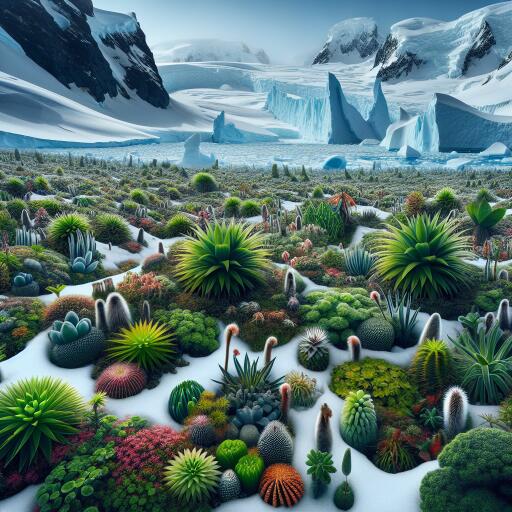
“`html
Unveiling an Unexpected Green Oasis in Antarctica’s Icy Wilderness
Antarctica, often visualized as a stark landscape of white, unveils a surprising tale of resilience and life. Recent research reveals a previously underappreciated abundance of plant life, thriving in the continent’s extreme conditions. This groundbreaking study, leveraging satellite technology from the European Space Agency, paints the first comprehensive picture of the vegetation sprawl across the Antarctic expanse, challenging old notions and setting a new course for conservation efforts in this pristine region.
The extensive survey illuminated nearly 45 square kilometers of lush greenery, a stretch akin to thrice the size of Lake Windermere, nestled in the UK’s scenic Lake District. The findings underscore the vibrancy of life in the Antarctic Peninsula and adjoining islands, areas now identified as critical hotspots of biodiversity. Despite the breadth of this discovery, it’s important to note that these vegetative zones constitute a mere 0.12 percent of Antarctica’s non-glacial landscapes.
The study’s revelations are crucial for the formulation of future conservation strategies. The intricate mosaic of mosses, lichens, and algae uncovered by the researchers underscore the inadequacy of current protections under the Antarctic Specially Protected Area system. These ecosystems, adapted to endure the harsh polar climate, play a pivotal role in carbon cycling and nutrient flow, highlighting the need for targeted monitoring and conservation frameworks.
Antarctica’s botanical residents, particularly mosses and lichens, are marvels of survival. Mosses, bereft of roots, rely on their leaves to absorb water and nutrients, stabilizing soil and supporting a host of microhabitats. Lichens, born from the symbiosis between fungi and photosynthetic partners (either algae or cyanobacteria), are masters of endurance, catalyzing the transformation of bare rock into fertile soil and sustaining a variety of wildlife.
The resilience and ecological significance of these organisms not only bolster the Antarctic’s fragile ecosystems but also offer a window into the impacts of climate change on similar habitats globally. The incorporation of sophisticated remote sensing technologies, along with drones and on-the-ground fieldwork, has been instrumental in bringing these hidden landscapes into focus. Such tools are reshaping how scientists engage with and understand remote, inaccessible terrains.
This integrative approach, combining satellite imagery, detailed aerial surveys, and direct observations, facilitates a nuanced understanding of Antarctica’s ecological dynamics. It promises not only more effective conservation strategies but also a blueprint for studying and protecting other vulnerable ecosystems worldwide.
As we venture further into the era of technological advancements, the marriage of ecology and technology opens new horizons for environmental research. The journey into Antarctica’s green secrets is a testament to the power of innovation in uncovering the mysteries of our planet, ensuring that even the most remote corners are not beyond our reach for research, preservation, and admiration.
Stay tuned for more insights into how cutting-edge technology is unlocking the secrets of our world’s most remote ecosystems, offering hope and direction for their future protection.
“`





Leave a Reply